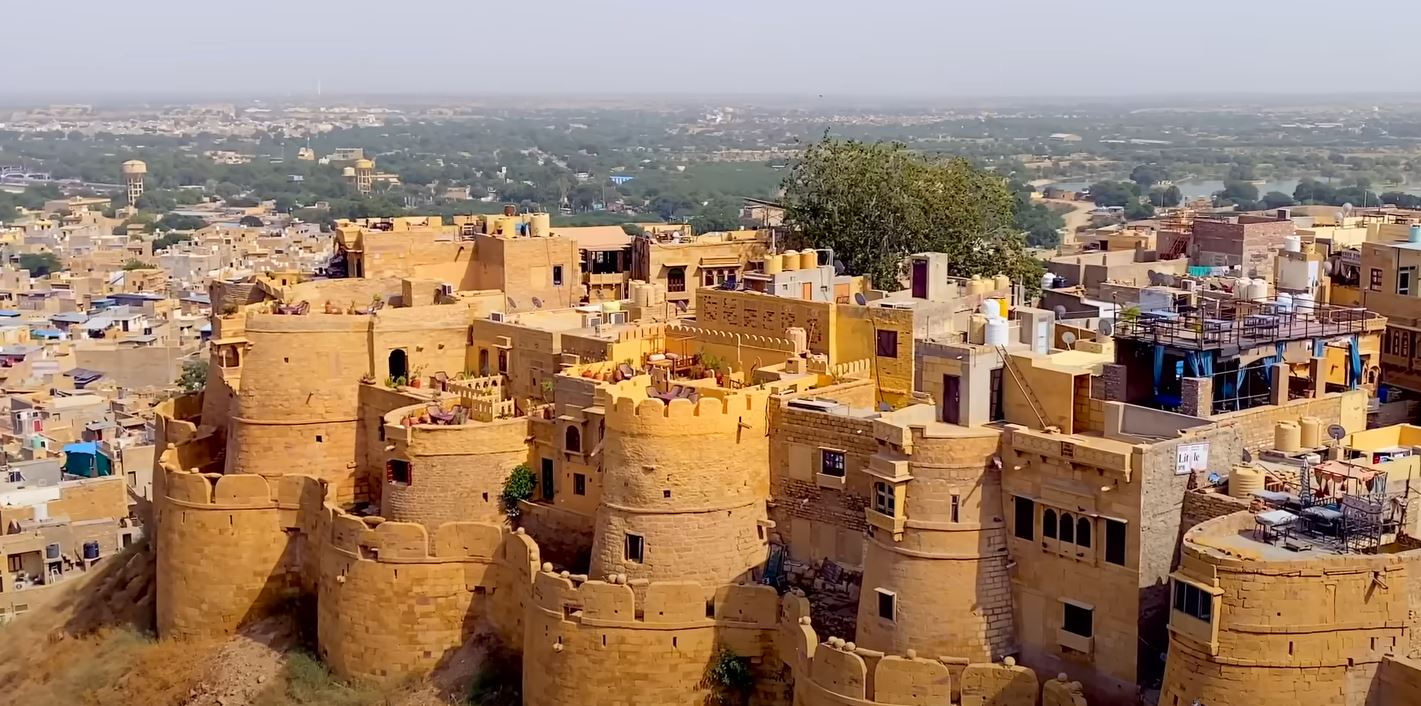Rising majestically from the golden sands of the Thar Desert, Jaisalmer Fort stands as a living sentinel of Rajasthan’s regal past. Known locally as Sonar Quila or the Golden Fort, it is one of the largest fully preserved fortified cities in the world. Built in 1156 AD by Rawal Jaisal, the fort is more than just a monument—it's a thriving township enclosed within towering sandstone walls. For those seeking a deep cultural immersion, understanding the layers of history, architecture, and life inside Jaisalmer Fort is essential.
The Foundation of a Desert Stronghold
The founding of Jaisalmer Fort traces back to the Bhati Rajput ruler Rawal Jaisal, who selected the Trikuta Hill to establish his citadel. Its strategic location allowed control over the ancient trade routes that once connected India to Persia, Arabia, and Egypt. This gave the fort not just military significance but also economic prosperity. Over the centuries, Jaisalmer grew into a vital desert kingdom that resisted multiple invasions and thrived under royal patronage.
Unique Architecture Built to Withstand Time
Jaisalmer Fort’s architecture reflects a blend of Rajputana style and ingenious desert adaptability. Constructed from yellow sandstone, the fort appears to change color with the sun—from tawny gold in the day to honey-orange by sunset. This chameleon-like quality enhances its moniker, "Golden Fort."
Spanning over 1,500 feet and rising nearly 250 feet above the plains, the fort is protected by three concentric walls. The outermost wall is punctuated by 99 bastions, most of which were built between the 16th and 17th centuries to counter cannon warfare.
Within the fort, one finds an organic city layout—narrow lanes, Jain temples, residential havelis, markets, and palaces—all carved with intricate detail. The fort's royal residence, Raj Mahal, still showcases ornate balconies, lattice windows (jharokhas), and carved pillars that speak to the opulence of Rajput architecture.
Life Within the Fort: A Living Heritage
Unlike many historic forts in India, Jaisalmer Fort is still inhabited. Roughly one-fourth of Jaisalmer’s population resides within its ramparts. This living fort houses local artisans, shopkeepers, priests, and families that have been part of this community for generations.
Walking through its winding alleys reveals traditional homes, bustling bazaars selling handcrafted goods, and sacred temples. The Jain Temples within the fort—built between the 12th and 16th centuries—are particularly notable for their detailed carvings, frescoes, and architectural symmetry.
The everyday life within the fort offers a real-time window into a cultural continuum that bridges ancient tradition with modern adaptation. However, the increasing population and tourism also raise important questions about sustainable preservation.
Exploring the Fort as a First-Time Visitor
The ideal way to explore Jaisalmer Fort is on foot, allowing time to appreciate its layered history. Guided tours led by local experts provide insights into the fort’s architecture, royal lineage, and spiritual heritage. Photographers and historians will find endless detail to document—from weather-worn carvings to panoramic views of the golden city below.
While planning your itinerary, consider using a Jaisalmer Sightseeing Taxi service to reach the fort and nearby attractions efficiently. It ensures comfort while exploring this arid region, especially during the hotter months.
Notable Spots Inside the Fort
Raj Mahal (Royal Palace): Once the residence of the Bhati rulers, it showcases several floors of opulent rooms and courtyards.
Jain Temples: A group of seven temples, each dedicated to a different Tirthankara, known for exquisite sandstone carvings.
Laxminath Temple: A revered Hindu temple dedicated to Vishnu and Lakshmi.
Merchant Havelis: These include Nathmal Ki Haveli and Shree Chand Patwa Haveli, located just outside the fort but integral to the city’s merchant history.
Each spot adds a layer to the narrative of Jaisalmer’s rich socio-cultural history and demonstrates how religion, commerce, and royalty coexisted.
Best Time to Visit and Tips for Travelers
The best time to visit Jaisalmer Fort is between October and March when the weather is pleasant. Early mornings and late afternoons offer the best lighting for photography and comfort for walking tours.
Travelers are encouraged to wear light cotton clothes, stay hydrated, and be respectful while entering temples or homes. Footwear may need to be removed at religious sites, and modest clothing is appreciated.
For an immersive experience, consider planning Jaisalmer 2 days trips that include a day within the fort and another exploring the surrounding havelis, lakes, and desert experiences.
Conservation Challenges and Sustainable Travel
While Jaisalmer Fort remains one of the most iconic heritage sites in India, it also faces structural stress due to over-tourism, inadequate drainage, and modern construction inside the ancient walls. Conservation efforts are ongoing, but sustainable travel practices—like hiring local guides, avoiding plastic, and staying in eco-conscious accommodations—can support the preservation of this UNESCO World Heritage Site.
Visitors can also support artisans and businesses within the fort by purchasing handcrafted souvenirs directly from the makers, thus sustaining the community economically.
Getting There and Around
Jaisalmer is well connected via rail and road from major Rajasthan cities. Once in the city, a reliable Taxi Service in Jaisalmer helps you move around conveniently. Whether you’re heading to the fort, nearby heritage spots, or planning a desert excursion, professional local transport ensures a smoother journey.
By delving into the rich history and daily life of Jaisalmer Fort, travelers not only explore an architectural wonder but also connect with a cultural legacy that continues to evolve. Let each step within the fort’s ancient pathways tell you a story—etched in sandstone and preserved through centuries.
